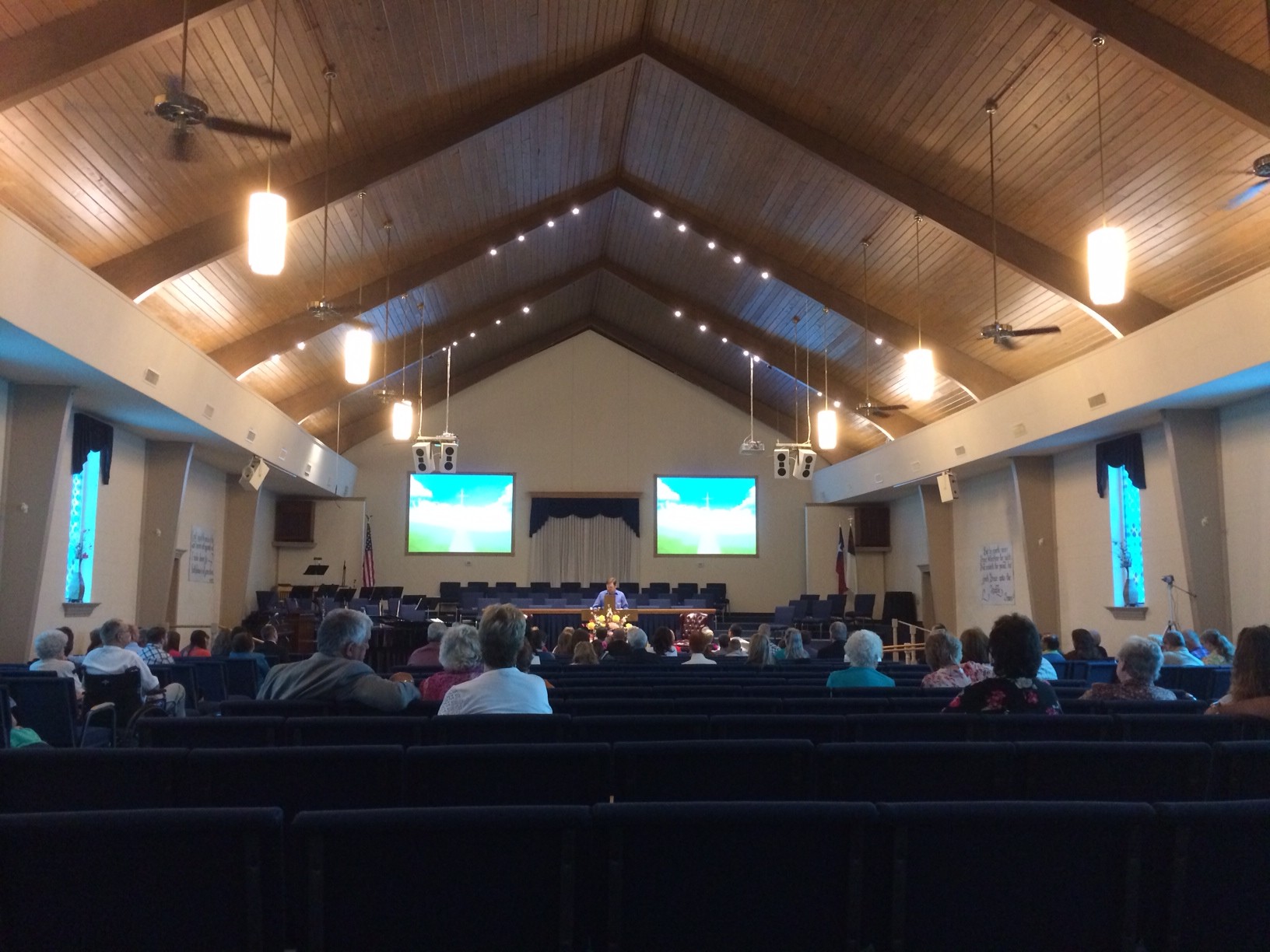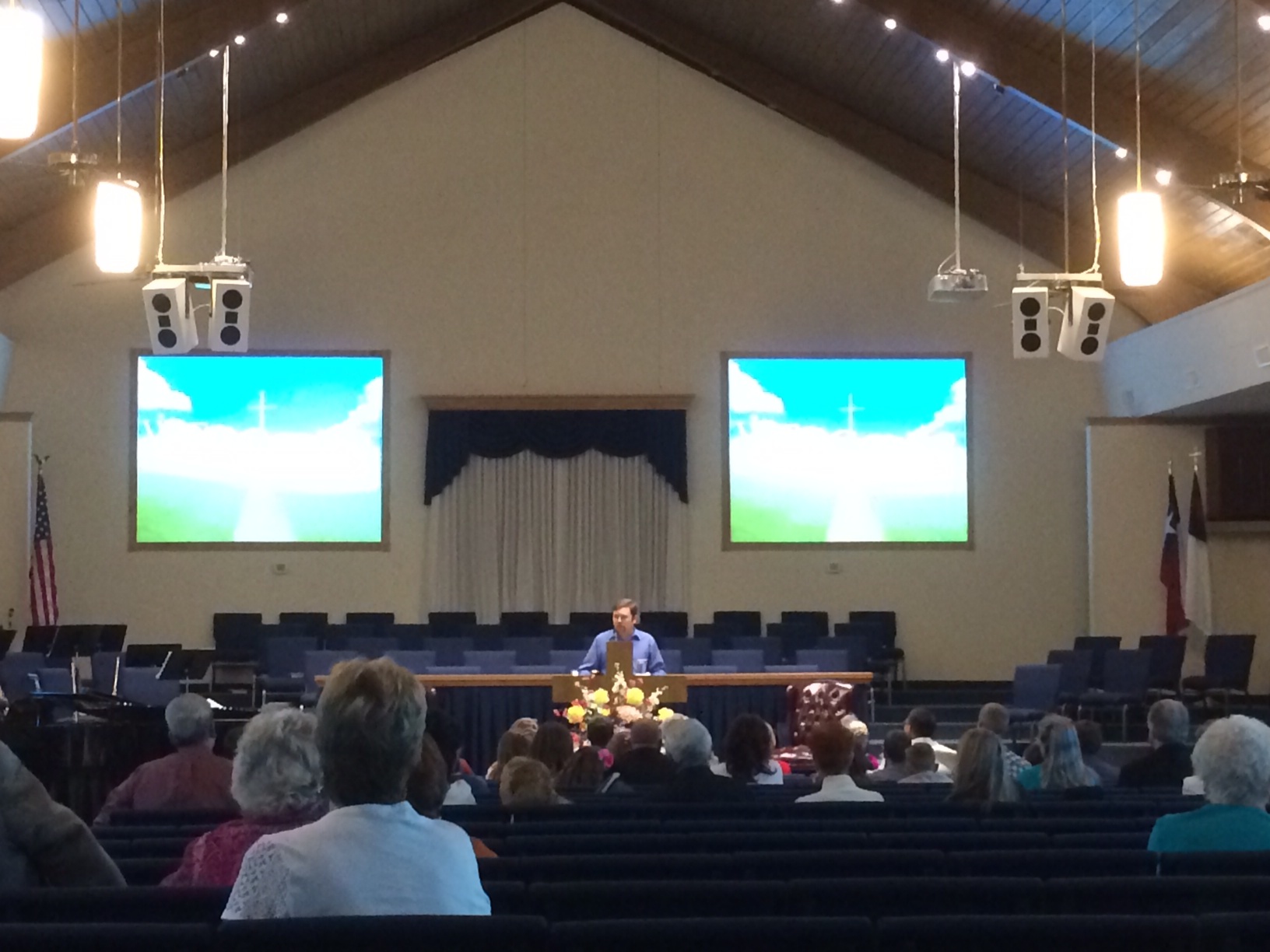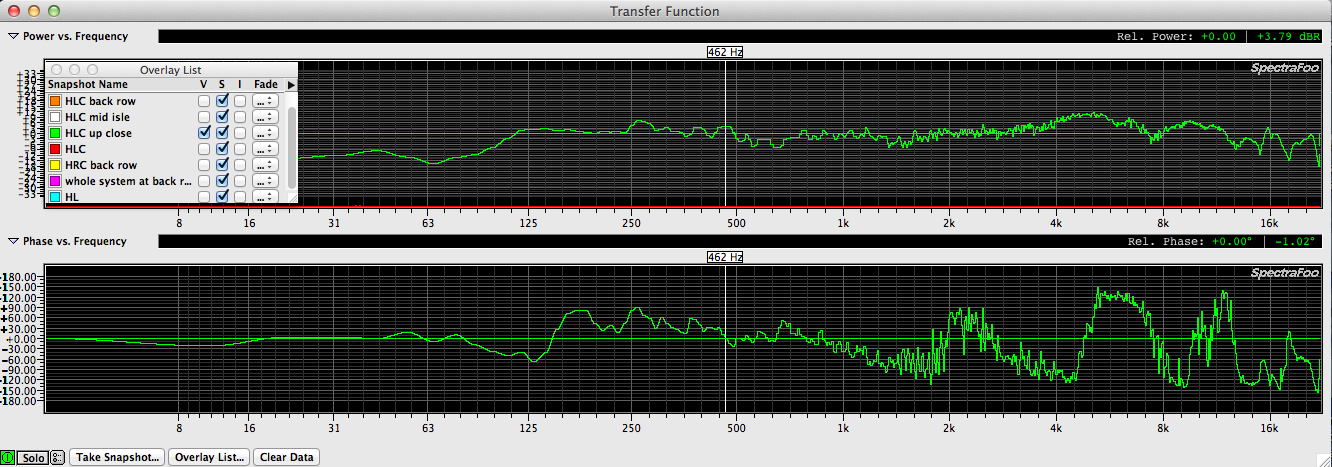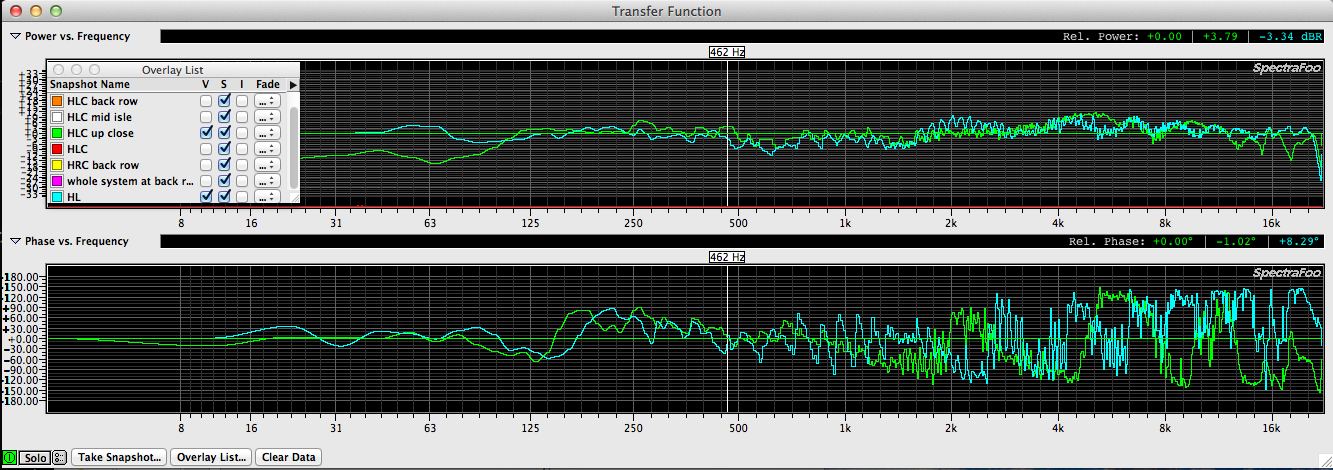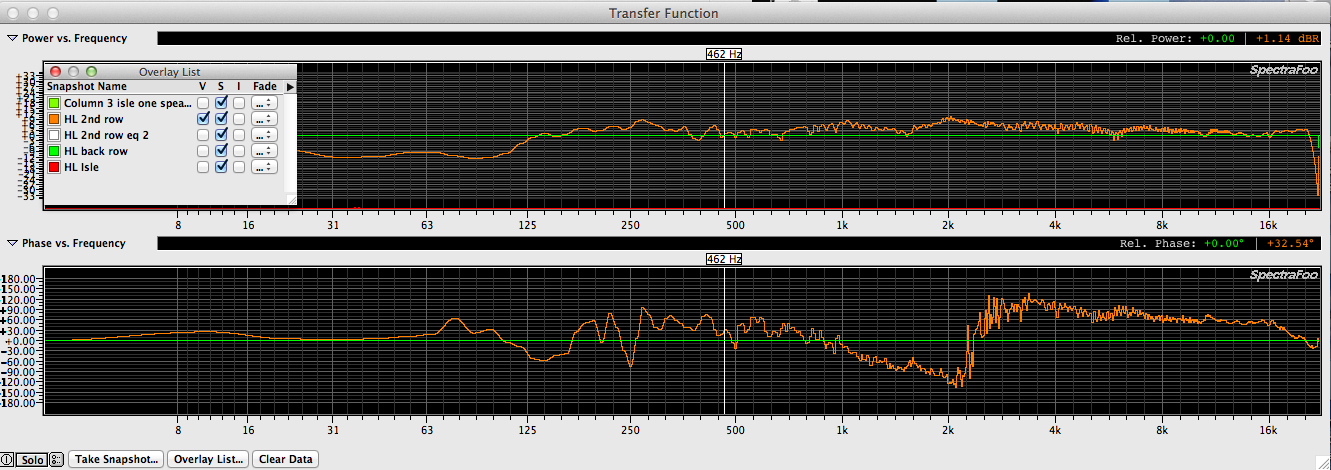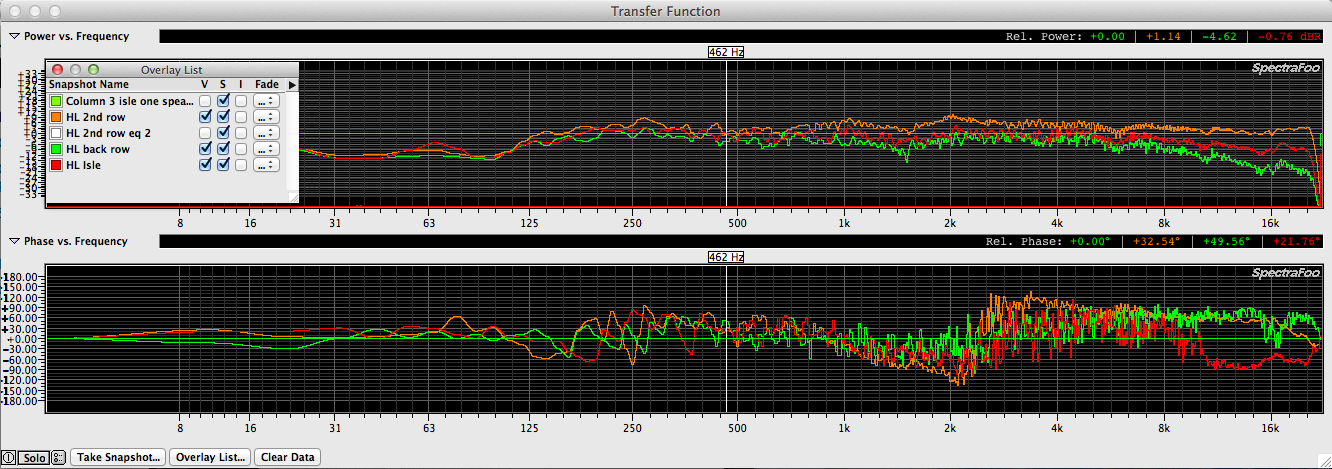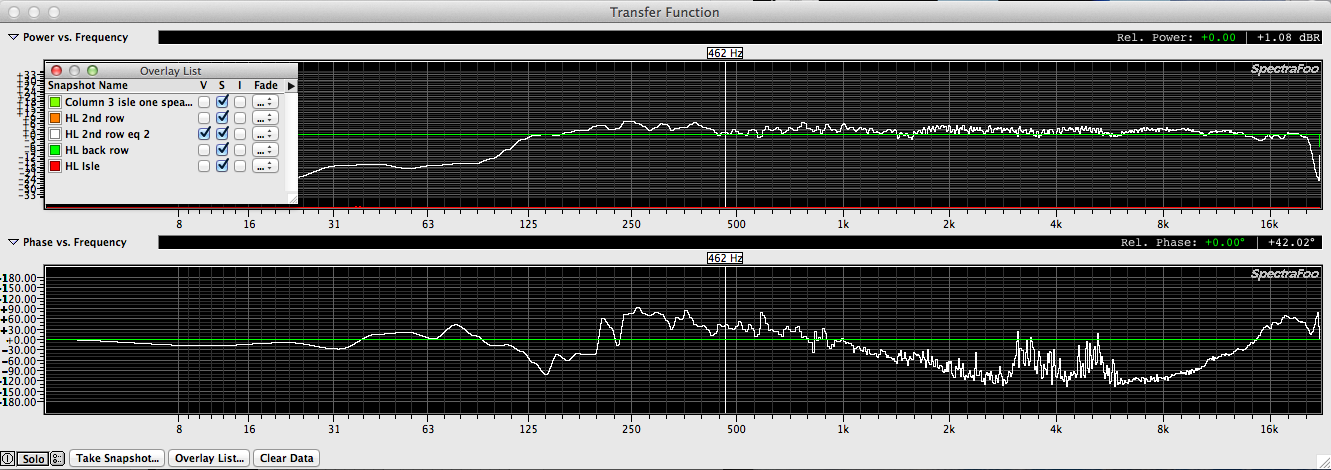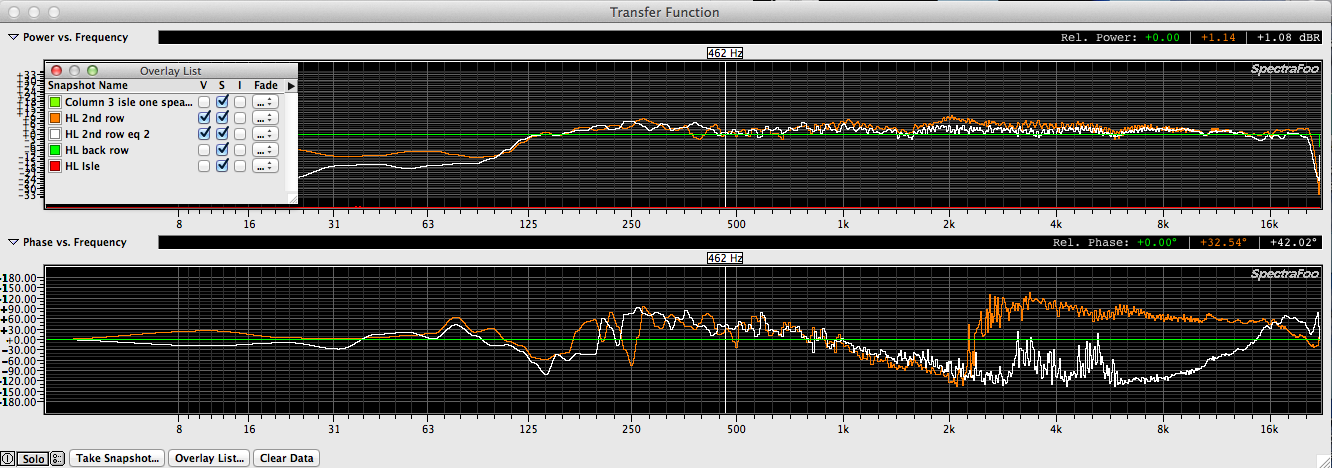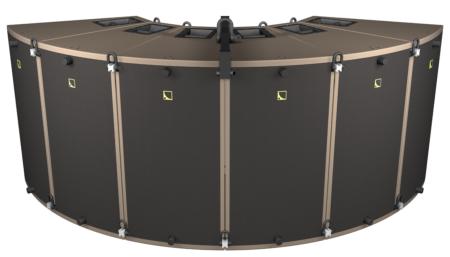In 2007 I spec-ed and installed a PA system in a small local church during their renovation. The space is very live with the back & side walls being painted block. Wooden columns break up the walls & the wooden ceiling. The rest of the space is textured sheet rock. The only soft surface is the carpet on the floor. Since the side walls are parallel & the front & back walls are parallel, speakers need to be aimed at the ears of the congregation & no where else to avoid reflections & feedback.
The main PA design originally consisted of (2) custom speakers made by Toby Speaker Corp called “Blasters” and (2) Toby “Sheriff” subs (hidden inside the duct work race ways on the side walls). Due to my own ignorance on 2007, it was decided to add a second set of “Blasters” right next to the original pair & simply jump from one to another. The concept at the time was to cover the side seats closest to the stage with the second set of speakers but without an additional amp channel & additional DSP, that was a poor design choice. At the time of the install, I actually had a Smaart 4 license but I had no idea how to really use it. Instead I used the built in RTA functions of the dbx Driverack 260. Another poor choice. At least I didn’t let the “dbx EQ wizard” function do the system tuning.
After learning some critical concepts from working with system designers & also reading Bob McCarthy’s books, I was pretty sure that the best thing I could do for that system was to disable 1/2 the speakers & after a road trip was preparing to make the call. Instead, I got a call from the church requesting a site visit to address some wireless issues they were having. I headed straight over to catch their Sunday service. Sometimes the best time to do something is right now. I scheduled more time next day to measure & troubleshoot their wireless gear further. After careful listening I am certain the second pair of speakers don’t help anything & cause all sorts of other issues. The PA would have sounded much better if I had used (2) main speakers like originally planned for. Amazing what over complicating a system can do to ruin it’s response.
This following trace was taken on axis of the inside speaker with both of speakers plugged in. In this position the mic is still measuring both speakers but is somewhat off axis of the outside speaker.
This trace was taken by moving the mic directly sideways to the side wall. Comb filtering?
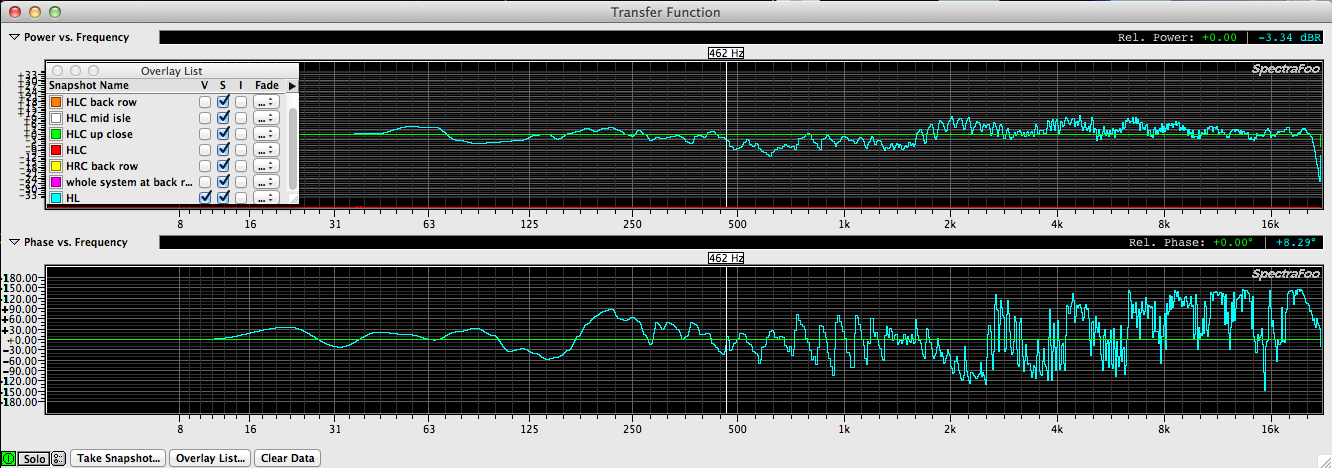
Here are the same traces overlapping. Notice that the high frequency response of the inside speaker is worse than the outside speaker measurement. This is surely due to phase cancellation & comb filtering.
What happens if I unplugged the outside speaker leaving only (1) speaker on with the mic back at the on axis position of the inside speaker at the second row?
The result is kind of amazing actually. I wonder if that phase shift around 2k is due to the cross over?
Moving the measurement mic directly away from the same speaker toward the back of the space, note that the high end starts to roll off due to distance (see red trace)…
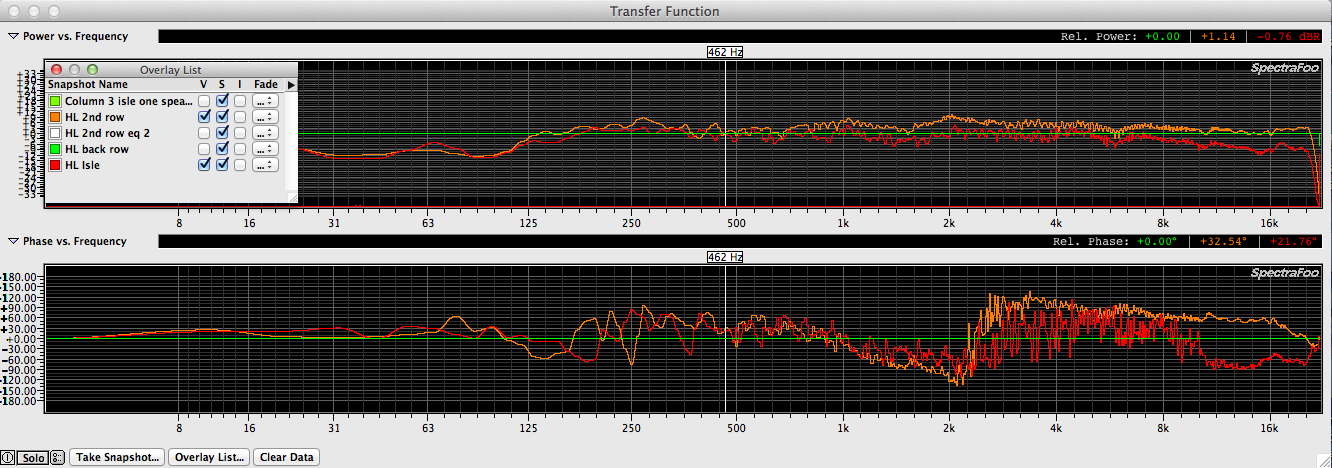
At the last row (see green trace), note that the high end has fallen off significantly. Roughly 75′ away from the main speaker pair. This space is a good candidate for a pair of delay speakers to add the missing high end back for the second half of the congregation. Especially considering that there is an isle right after the 7th row of seats. Literally splitting the seating area in 1/2 with about 6 feet of open area between them.
Here is the response of the single HL speaker at the second row position again with corrective EQ performed at the dbx driverack 260 (white trace). I would of addressed the extra bit of low mid energy around 250hz but the dbx Driverack 260 only allows for (4) parametric filters on the outputs & I had already used those to tame the extra high mid energy. I would of remeasured at the same middle & rear position as I was tuning but congregation members have already complained that it’s too loud up front & the cuts that were made at 7k, 4.5k, 2k & 1k will help solve that issue. Those sitting further back will have to suffer a bit until the delay speaker pair can be installed. In the meantime, everyone should benefit from unplugging the extra speakers.
Before & after EQ with the mic at the second row.
A recap. The extra pair of speakers are unplugged now & the system sounds & measures better than with (4) speakers improperly coupled.
The extra pair of speakers can be relocated 1/2 way back in the space to solve the loss of high frequencies due to distance from the mains. This will also allow for the main speakers to be turned down & also aimed down more which will help keep them from blowing on the back wall & side walls since they will be covering less.
Truly a win / win situation.
A few thoughts.
IF you need more coverage than one cabinet can provide, there is a right & wrong way to add a second cabinet.
1. The splay of the two cabinets need to be such that their coverage patterns overlap correctly. In an ideal situation you would use speakers that are designed specifically so that when the sides & fronts are touching, the coverage overlap is correct. One example of this type of speaker is the L’Acoustics L’Arc. The product like offers a spot & flood model. No matter how you mix & match them, their horn coverage pattern is the same as the outside cabinet angles so you get perfect overlap no matter how many of which cabinets you use. Smart!
If you don’t have the right type of cabinets but you need more coverage than a single cabinet provides, you need to do your own calculations. For example, if you have (2) cabinets with 80 degree conical horns (like the Toby Blasters), they should be splayed so that they are roughly 40 degrees apart from each other. Maybe a bit less, maybe a bit more. That is why we measure. To avoid guessing. At the same time you need to consider if having 110+ degrees of high frequency coverage is going to energize the walls and / or ceiling. If so, you might be better off with some coverage issues than with inherent phase issues that come with using a second cabinet. In the case of this church, small front fills would be the appropriate solution for covering the first row of seats.
2. If the cabinets you use aren’t designed to be perfectly coupled, you can still locate them side by side but in addition to setting the splay between the cabinets right, the delay offset between the two cabinets needs to be correctly set. Maybe one of those cabinets can be operated at a lower volume because it’s covering less & that alone will help minimize the bad stuff that can happen between adjacent cabinets.
3. Any time you couple full range cabinets together, you will see an addition in LF response of the system. Especially in the range where the cabinets become omni directional. This dictates that you should have a separate DSP & amp channel for each speaker. This way you can balance level, eq & delay to make the two cabinets working side by side as a complimentary pair.
It’s much easier to get (2) speakers widely spaced apart from each to sound good compared with (4) speakers coupled as adjacent pairs unless you have the right speakers or at least the right knowledge & gear. When you don’t have the tools to model an acoustic space prior to designing a PA, I would suggest that you experiment with only (2) speakers as a starting point & see what can be learned. If I’d spent enough time comparing (2) to (4) speakers in this space, I think I would of come to the same conclusion I reached today…Less is more.


